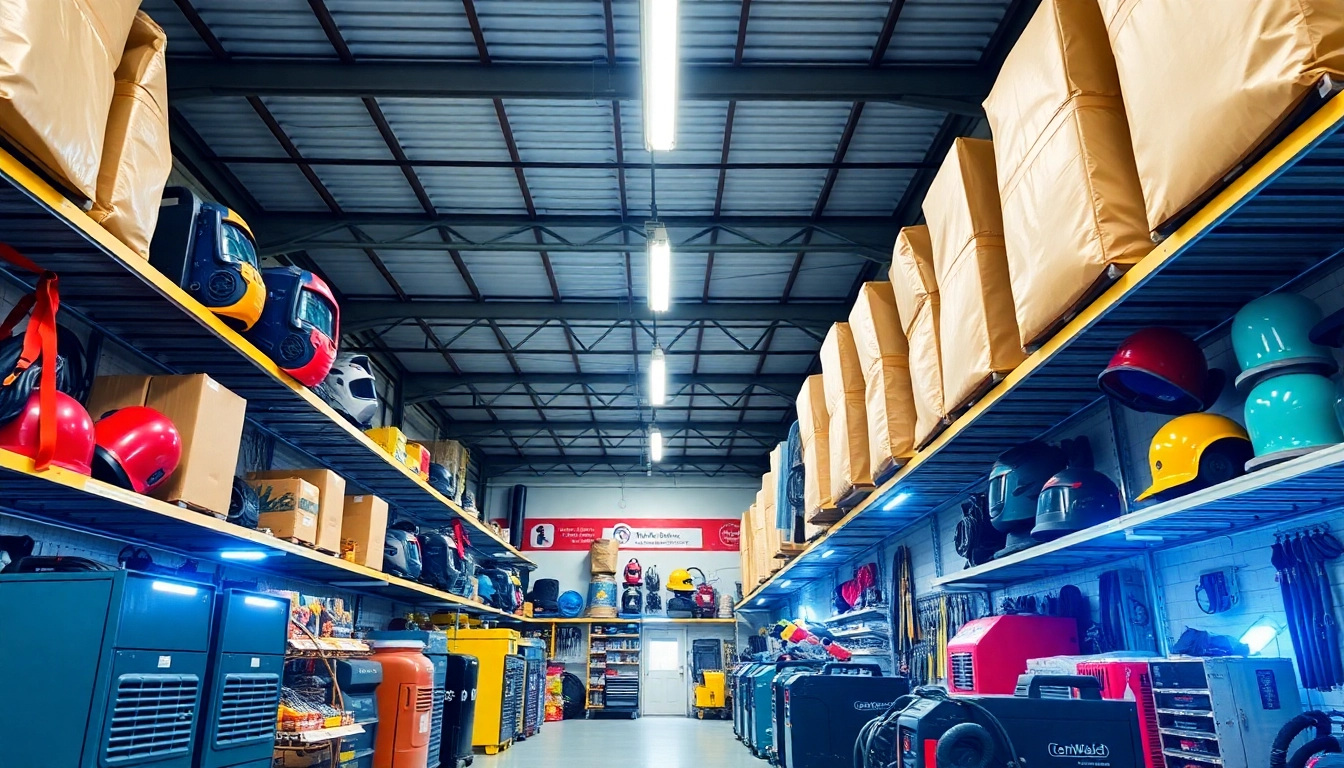
Understanding Welding Supplies: A Comprehensive Guide
Welding is a critical skill across various industries, from automotive manufacturing to construction. To successfully execute welding tasks, it is essential to have welding supplies that meet the needs of specific projects. This guide delves into what welding supplies are, the types required, and the best practices for purchasing and maintaining them.
What Are Welding Supplies?
Welding supplies consist of various tools and materials necessary for the welding process. These include equipment used to heat and join metals, protective gear for safety, and consumables like welding electrodes and filler materials. A well-equipped workshop enhances both the quality of work and the safety of the welder.
Types of Welding Supplies You Need
The category of welding supplies can broadly be divided into the following:
- Welding Machines: The heart of any welding operation, machines like MIG (Metal Inert Gas), TIG (Tungsten Inert Gas), and Stick welders each have specific applications.
- Consumables: These include electrodes, filler rods, and welding wire—materials consumed during the welding process.
- Protective Gear: This essential equipment includes helmets, gloves, aprons, and boots designed to protect welders from hazardous sparks and intense heat.
- Welding Accessories: These items assist in various welding tasks, including clamps, magnets, and welding carts.
Top Brands in Welding Equipment
Several reputable brands consistently deliver high-quality welding supplies, including:
- Miller Electric: Known for its durable and innovative machines.
- Lincoln Electric: Offers a wide range of welding equipment and a strong reputation for reliability.
- ESAB: A leader in welding and cutting technology with a focus on safety and performance.
The Best Welding Supplies for Professionals
Choosing Between MIG, TIG, and Stick Welders
Choosing the right welder is critical for efficiency and the quality of the final product. Here’s a breakdown of the most common types:
- MIG Welders: Ideal for beginners and high-speed welding projects, MIG welding is known for its ease of use and versatility in various applications.
- TIG Welders: While more difficult to master, TIG welding offers precision and is best suited for thin materials and detailed work.
- Stick Welders: These are highly portable and suitable for outdoor work but may not provide as clean a weld as MIG or TIG welding.
Essential Accessories for Every Welder
Equipping yourself with essential accessories can streamline the welding process and improve results. Some must-have items include:
- Clamping Tools: Keep materials secure during welding to prevent movement.
- Welding Helmets: Protects the welder’s face and eyes from harmful UV light.
- Chipping Hammers: Used post-welding to clean away slag.
Quality vs Cost: What Matters Most?
Investing in quality welding supplies often pays off in terms of safety and durability. Cheaper options might save money in the short term but can lead to higher operational costs and safety risks over time. It is crucial to assess both immediate needs and long-term goals when purchasing supplies.
Safety First: Protective Gear for Welders
Must-Have Safety Equipment in Welding
Welding can be dangerous without proper protective equipment. Key safety gear includes:
- Welding Helmets: Essential for protecting your eyes and face from bright light and flying sparks.
- Welding Gloves: These should be heat-resistant to protect hands from sparks and heat exposure.
- Protective Clothing: Flame-resistant jackets and pants reduce burn risks.
How to Properly Use Welding Helmets and Gloves
For maximum safety, welders must wear helmets and gloves properly:
- Ensure the helmet has a proper fit and is comfortable to wear for extended periods.
- Use gloves that allow for dexterity while providing adequate protection; avoid loose-fitting gloves.
Tips for Maintaining Protective Gear
Regular maintenance of protective gear prolongs its lifespan and effectiveness:
- Clean helmets after each use to prevent build-up from spatter.
- Inspect gloves for cuts or burns before each use and replace them when necessary.
Where to Buy Welding Supplies: Online vs Physical Stores
Advantages of Shopping Online for Welding Supplies
Online shopping has revolutionized how welders acquire supplies. Key benefits include:
- Convenience: Shop 24/7 from the comfort of your home.
- Variety: Access to a broader range of products than many local stores offer.
- Price Comparisons: Quickly compare prices across multiple retailers to find the best deals.
Local Stores You Shouldn’t Miss
Local welding supply stores often provide hands-on assistance and can be invaluable, especially for first-time buyers. Local shops often have knowledgeable staff who can guide you through product features and help you choose the right supplies.
What to Look for in a Welding Supply Store
When evaluating a welding supply store, consider:
- Reputation: Look for customer reviews and industry ratings.
- Product Range: Ensure they carry a variety of brands and types of equipment.
- Expertise: Staff should be knowledgeable and willing to assist customers with questions or recommendations.
Maintaining and Storing Welding Supplies Properly
Best Practices for Equipment Handling
Improper handling of welding equipment can lead to accidents or equipment damage. Follow these best practices:
- Always handle machines with care and ensure they are switched off when not in use.
- Use equipment for its intended purpose only.
- Follow manufacturer guidelines for handling and operating machinery.
Storage Tips to Prolong Lifespan
Proper storage extends the lifespan of welding supplies:
- Store machines in a dry, clean area away from corrosive substances.
- Keep welding rods and wires sealed in containers to protect them from moisture.
- Use shelving units to keep tools organized and accessible, reducing the risk of damage.
Regular Maintenance for Optimal Performance
Regular maintenance is essential for optimal performance:
- Clean machines after each use to prevent dirt and spatter build-up.
- Check wiring and connections periodically to avoid electrical issues.
- Follow a scheduled maintenance routine as per manufacturer instructions.